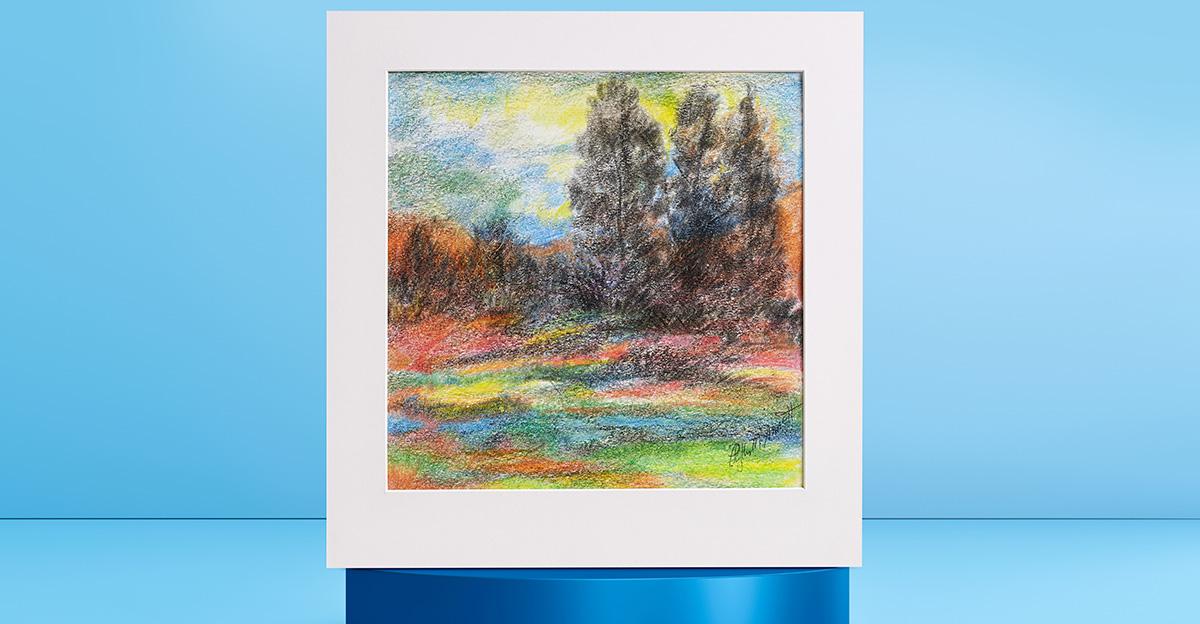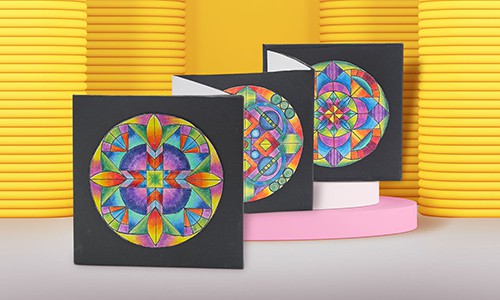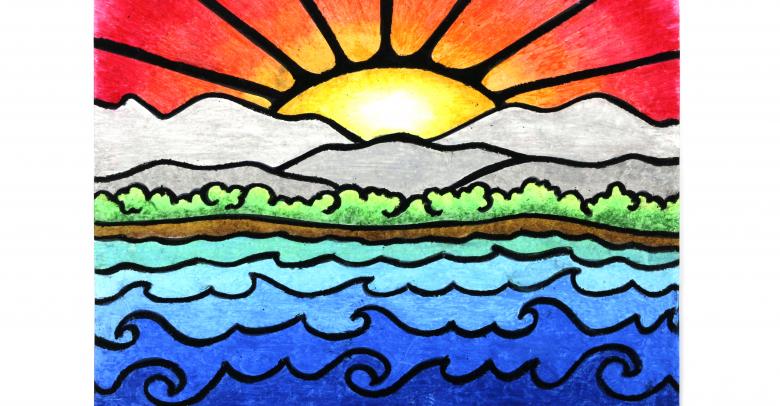Students use colored pencils to create a semi-traditional landscape with layers of color to border on abstraction without losing the details of the realistic landscape. The Color Field Representational art lesson plan incorporates colored pencils with the intentionally playful use of color layering and blending.
Color Field Abstract Expressionism
Color field painting began in the 1940s as a truly abstract way to bring together the emotions and feelings of ancient myths. Straying from the suggestion of traditional symbols and illustrations, this style made the figure and ground share space and priority.
The color field method meets a more traditional landscape in this lesson plan. Emphasize the use of landscapes as a record of history and art and the mindset behind the emotions in famous color field paintings. The result will be students practicing the Principles of Art and Design to create a detailed and colorful landscape.
View the Lesson Plan: Color Field Representational Landscapes
Color Field Representational Landscapes Project
Artists known for this style include Mark Rothko, Barnett Newman, Clifford Still, Robert Motherwell, and Hans Hoffman. Students should be intentional with their use of colored pencils to create depth, perspective, dimension, and vibration.
 Colored Pencil Techniques:
Colored Pencil Techniques:
- Strokes
- Cross Hatching
- Gradation
- Tonal Layering
- Graduated Tonal Layering
Learn More: Colored Pencils 101
More Colored Pencil Lesson Plans
General’s Woodless Coloring Pencils and General’s Drawing Class Essential Tools Kit can create a wide range of beautiful and detailed art pieces. Quality colored pencils are a great fit for both traditional and abstract projects.
If you want more colored pencil ideas, check out some of these lesson plans!









Leave a Reply